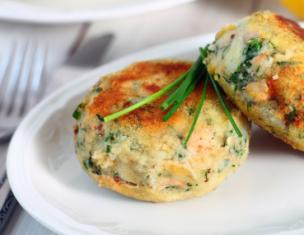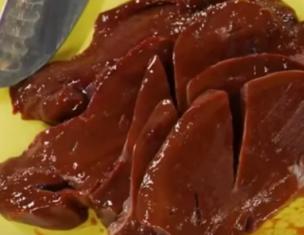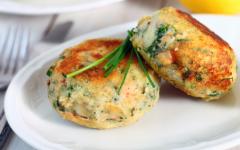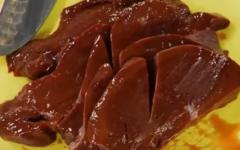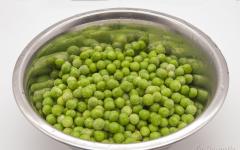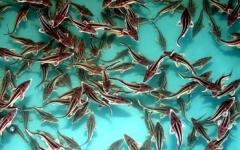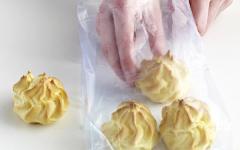Old Russian cuisine
Counting 500 years of development, the Old Russian cuisine is characterized by the extreme constancy of the composition of dishes and their flavoring range on the basis of strict (scholastic) canons of preparation. The kitchen of this period was fixed in the first half of the 16th century, at the time of its culmination, in the written monument of 1547 (Domostroy) by the adviser of the Tsar Ivan IV the Terrible Sylvester, who compiled a list of modern dishes, culinary items and drinks. The refectory books of the largest Russian monasteries, preserved since the end of the 16th century, supplement our information on the repertoire of Old Russian cuisine.
The basis of it was bread, flour products and cereal dishes. Already in the 9th century there appeared that sour rye black bread on a quail-leavened sourdough, which became the national Russian bread and the love of which the overwhelming majority of the people had a decisive influence on the position of the Russian church hierarchy in disputes about the Eucharist at the Ecumenical Councils in the middle of the XI century (where the Russians bishops rejected unleavened bread!) and the subsequent economic and political orientation of Russia to Byzantium, and not to the Latin West.
All the oldest flour products were created exclusively on the basis of sour rye dough, under the influence of fungal cultures. So flour flours have been created - rye, oatmeal, pea, and also pancakes and rye pies. Russian methods of leaven, the application of a test from imported (and later local) wheat flour and its combination with rye gave later, in the 14th-15th centuries, new varieties of Russian national bread products: pancakes, shangs, puffs (fried in oil), pellets, bagels (from brewed dough), as well as kalachi - the main national Russian white baked bread.
Particularly developed pies, that is, products in the test casing, with a variety of fillings - from fish, meat, poultry and game, mushrooms, cottage cheese, vegetables, berries, fruits, from various grains in combination with fish, meat and mushrooms .
The grain in itself served as the basis for creating dishes from it - porridge. Kashi - fried, buckwheat, rye, so-called "green" (from young, unripe rye), barley (barley) - were made in three types, depending on the ratio of grain and water: steep, smudges and slurries (semi-liquid). They were prepared with additives of the same variety of products that were used in the pie filling. In the 10th-14th centuries, the porridge acquired the importance of a mass ritual dish, which began and ended any major event, marked by the participation of a significant mass of the people, whether it was a princely wedding, the beginning or completion of a church, fortress or other socially significant event.
The habit of combining predominantly a flour base with meat, fish and vegetable products in a single culinary product or dish was the reason that at the end of the period of Old Russian cuisine (in the XVI-early XVII century) it organically included such "eastern" dishes as noodles (dairy , meat, chicken, mushroom) and dumplings, borrowed respectively from the Tatars (Turks) and Permians (Kama threaten Finns), but became Russian dishes in the eyes of foreigners and the Russian people themselves, and even gave a purely Russian variety - kundyum (fried singing meni with mushrooms).
In the medieval period, most Russian national drinks also developed: honey (about 880-890), prepared according to a method close to the production of grape wines, and gave a product close to cognac (aged 5 to 35 years); birch bark drunk (921 year) - a product of fermentation of birch sap; honey drunk (920-930) - with the addition of hop to honey, in addition to berry juices; honey boiled - a product similar in technology to beer (996 year); kvass, strong drink (XI century); beer (about 1284 years).
In the 40-70-ies of the XV century. (not earlier than 1448 and no later than 1474), Russian vodka appears in Russia. Early expressed national technological differences in its manufacture affected the higher quality of Russian vodka in comparison with the later gorilka - Polish and Cherkasy (Ukrainian) vodka. Russian (Moscow) vodka was made from rye grain by "sitting", and not by distillation, i.e. by non-distillative slow evaporation and condensation within the same glassware.
Distribution of vodka begins only from the end of the XV - the beginning of the XVI century, when it becomes the subject of state monopoly; from Russia vodka in the beginning of the XVI century (1505) spreads to Sweden. In 1533 in Moscow, on Balchuga opposite the Kremlin, the first public "restaurant" was opened - the tsar's tavern. At the end of the XV century. (in the 70's and 80's) there are first professional cooks - not only the king, but also the princes and boyars. Separately from the chefs, the profession of bread-bakers is affirmed, with three categories: the Greeks for extract and unleavened dough, the Russians for rye and sour, and Tatars for wheat flour.
Already in the early Middle Ages, a clear, or rather sharp, division of the Russian table into lean (vegetable-fish-mushroom) and skoromny (milky-egg-meat), which had a huge impact on the entire further development of Russian cuisine until the end of the XIX century . This influence was not positive and fruitful in everything. Carrying out a sharp line between the fast and fast table, isolating them from each other by the "Chinese wall", isolating some products from others, strictly preventing their mixing or combination - all this only partially led to the creation of some original dishes, but in general it could not but cause a certain monotony of the menu.
Most of all this artificial insulation was lucky with a lean table. The fact that most days of the year - from 192 to 216 in different years - were considered lean, and the posts were observed very strictly, promoted the natural expansion of the lean table. Hence the abundance of mushroom and fish dishes in Russian cuisine, the various uses of various plant materials - grains, vegetables, forest berries and herbs (nettles, whips, swans, etc.).
At first, attempts to diversify lean table expressed in the fact that each type of vegetables, mushrooms or fish was prepared separately, independently. Cabbage, turnips, radish, peas, cucumbers - vegetables, known since the IX century - if you did not eat raw, then they salted, steamed, boiled or baked, and separately from each other. Therefore, such dishes as salads, never were peculiar to Russian cuisine, they appeared in Russia already in the XIX century. as one of the borrowings from the West. But even then they were initially made primarily with one vegetable, which was why they called "cucumber salad", "beetroot salad", "potato salad", etc. Mushroom and fish dishes. Each kind of mushroom - mushrooms, redheads, honey agarics, white, morels, butter mushrooms, russules, mushrooms, etc. - were salted or brewed completely apart from others, which, incidentally, is still practiced today. The same was true of fish that were used only in boiled, dried, salted, baked and only later, in the XIX century, in fried form. Each fish dish was cooked in a special way for a fish.
Therefore, the ear was made from each fish separately and was called accordingly - perch, ruff, burbot (mnevoy), sterlet, etc., and not just fish soup, like other peoples. Thus, the number of dishes in the XV century by name was huge, but in content they were little different from each other. The taste variety of homogeneous dishes was achieved, on the one hand, by the difference in heat treatment, on the other hand by the use of various oils, mainly vegetable oils (hemp, walnut, poppy, wooden, that is, olive, and much later - sunflower) . Of the latter, bow and garlic were often used, and in very large quantities, parsley, anise, coriander, bay leaves, black pepper and cloves, appeared in Russia already in the 10th-11th centuries, and in the 15th and early 16th centuries this set was supplemented ginger, cinnamon, cardamom, aire and saffron.
Finally, during the medieval period of the development of Russian cuisine, a tendency to use liquid hot dishes, which are collectively called "hlebova," is also emerging. The most widespread are such types of hlebov, as well as, based on vegetable raw materials, as well as various types of soup soups.
As for milk and meat, these products were relatively rare until the 17th century, and their processing was not complicated. Meat (as a rule, beef, less often pork and lamb) was brewed in cabbage soup or kashitsy and was not fried until the 16th century. A strict prohibition was imposed on the consumption of many types of meat, especially on lynchine and veal. It remains a historical fact that in 1606 the boyars managed to set the crowd on False Dmitry I, prompting her to break into the Kremlin only by informing that the tsar was not real, because she was eating veal. This was the most convincing argument. Milk drank raw, languid or sour; of sour milk they received cottage cheese and sour cream, and the production of cream and butter remained almost unknown until the 19th century.
Honey and berries in Old Russian cuisine were not only sweets in themselves, but also the basis on which syrups and jams were created. And being mixed with flour and butter, with flour and eggs, honey and berries became the basis of the Russian national sweet product - gingerbread. Therefore, gingerbread were up to the XIV century only honey or honey-berry, most often honey-malinous or honey-strawberry. In the fourteenth and fifteenth centuries another Russian national sweet product, lislyn and ki, is prepared, prepared from thoroughly wiped berries of cranberries, blueberries, cherries or strawberries, dried in a thin layer in the sun. Until the 20th century, the Russian national delicacy included nuts, first forest and walnut (Volosh), and later, from the 17th century, cedar, and sunflower seeds.
Some of the traditional ancient dishes today not only do not eat, but many have not heard. Perhaps this was because they were characteristic of the peasant environment, and in urban, middle-class were uncommon. Remember the immortal Nekrasov: "Eat the yura, Yasha, there is no milk ..." And they cooked these dishes in a Russian stove. On a gas or electric stove they are often impossible to prepare.
Recipes
Kutya
Memorial days existed in all religions and among all peoples. On the day of burial and remembrance of the deceased in Russia, according to tradition, it was brought to the church and the house of the memorial kutia, or kolivo, was consumed - a sweet porridge made of red wheat or rice with honey and sweet fruits (raisins). Grains symbolize the future resurrection of the deceased, and sweetness is the symbol of heavenly bliss.
The same porridge was fed to the christening of the baby, but had a completely different, life non-confirming value. Kutyu served and at the conclusion of Christmas, she solemnly ended the Christmas forty-day post.
Unlike the usual porridge, the baptismal was cooked on milk, and even the croup was soaked in milk. In porridge they put a lot of oil. Ready porridge decorated with halves of boiled eggs. In the baptismal porridge baked chicken or rooster, depending on whether a girl or boy was born. Together with the porridge they brought fried eggs, jelly, baked ham, dracion, cheesecakes and invariably grandmother's pies.
Tyurya
This is the most common and artless old-fashioned lean dish is a bowl of cold salted water with floating in it slices of bread and crumbled onions. However, you can try this dish a little diversify.
In addition to the raw vegetables (they can be brought to a boil), leaves, roots, grasses, edible wild-growing, as well as almost all types of dairy products - pro-crouches, ryazhenka. Mayonnaise also suits. Plantain and quinoa put in boiling salted water, quickly bring to a boil, immediately remove from heat and cool to room temperature.
Before serving crumble finely onion, season with vegetable oil and put the croutons.
1 liter of water, 2 tbsp. spoons of small rusks from rye bread, 1 onion, 1 tbsp. a spoonful of fresh finely chopped plantain, 1 tbsp. a spoon of finely chopped fresh quinoa, salt, 1 tbsp. spoon of vegetable oil.
Vole
This is a soup of rye flour, or rather, from a fermented rye dough - a ditch. They set up the ranch on the eve, and when it was sufficiently sour, a voles was prepared from it. In the pot, water was boiled, salt, bay leaves, onions, raschinu and whipped with a whorl (whorl) (*), which served in the past centuries as a mixer. Polevko filled with onions, dried mushrooms, herring, dried fish, snaps.
Solodukha
Soloduha was ate in the days of the Great and Christmas posts. This is a liquid dish, something like dessert: it is sweet and sour to taste. It was prepared from rye malt, i.e. rye grain, well germinated, dried, smoothed and sifted. In a clay pot, boiled water, cooled to a temperature of 35 degrees, poured malt and nailed (intensively mixed) with a whorl so that there were no lumps. The pot was put on the bake, and while the Russian stove was languishing, the malt was warm. In a pot of malt, from time to time throwing pieces of ice or snow, so it does not overheat. At the same time the malt was liquefied, and rye malt was added to it from time to time, slightly podding and often mixing. When the process of addition is over (this is sorted according to the degree of sweetness), the pot is put in an oven and brought to a boil, immediately removed from the oven, quickly cooled to 25-30 degrees, put a crust of rye bread in a pot and covered it with a clean towel in a warm place, as a rule, in Russian aech. At the same time, the malt is insisted, sour, acquires its characteristic sweet-sour taste, honey aroma and pinkish color.
Rustic cubes
This dish is close to malt and also dessert.
However, the process of preparing it was delayed for a day or more. It was prepared from rye malt, it was sweet to the taste. However, you can prepare it from rye flour.
In the boiling water pour sifted rye flour and cook until the density of jelly. Then add a piece of ice (in the villages they put clean snow), close tightly with a lid and put in a Russian oven for a day. Finished cougar - pink. To taste it is filled with sugar.
Cubes of potato
To prepare it, boil the potatoes in a peel, cool, clean, thoroughly thicken, so that no lumps remain. Then mixed with a malt (sifted rye flour) semi-thick dough, shift the shock into clay mountains and, closing the lid, put in the Russian oven podgrebaaya from all sides to the pot hot coals After an hour the pot is taken out, well beaten with a mass of colostrum, put in the oven for another hour.
Then the pot is removed from the oven, the lid is removed and, after cooling, the kulag is moved to a wooden bowl, covered with a towel and placed in a warm place (on a Russian stove) for another day for souring, making sure that it does not get too perekisal. Then it is again transferred to a clay pot and, having covered with a lid, put in the oven for baking. After a few more hours the kulag is ready. In appearance, it resembles porridge, but even thicker. Color kulagi pinkish, it tastes like sweet and sour. The kulag is eaten cold, adding ice or snow.
Zavaruha-dullness
In the boiling sweetened water pour sifted wheat flour, boil
simplicity of semolina porridge. On a greased frying pan spread out the slide mixture, make a groove in the middle, pour the melted margarine and bake in the oven or in the oven until a ruddy crust. Serve with curdled milk.
Oatmeal
In the XVI and XVII centuries. in great use to the people was the oatmeal, prepared from oatmeal with water; in dry form, it let the serving people for food along with rye flour.
This dish was prepared from oats, aged during the night in a warm Russian oven. In this case, flour obtained from such grains lost the ability to form gluten, but it swelled well in water and quickly thickened. Tolokno was kneaded on chilled with boiled water, seasoned with salt.
Logas
This is porridge from barley cereals, it is cooked with beans or peas.
Pound a handful of boiled peas (beans), dilute with broth. Add barley cereals, add bacon, salt, cook for 20 minutes. Eat this cereal with lean oil, honey or sugar.
Peas - 400 g, meat broth - 200 ml, barley rye - 400 g, fattened salted pork fat - 50 g, vegetable oil - 50 g.
Kolivo
Rinse the barley rind, boil in the water over moderate heat, taking off the foam all the time. As soon as the croup begins to emit mucus, drain excess water, pour the porridge into another dish, add milk and cook until softness of the cereal and thickening, stirring all the time.
Poppy prepare: pour boiling water, let it steam, after 5 minutes, drain the water, rinse poppy, pour again with steep boiling water and drain as soon as droplets of fat appear on the water surface.
Peel the mashed potato in a mortar (porcelain), adding half the teaspoon of boiling water to each tablespoon of poppy. Poppy mix with thickened, softened porridge, adding honey, heat on low heat for 5-7 minutes, stirring constantly, remove from heat, season with jam.
2 cups of barley cereal, 3 liters of water, 1 glass of milk, 0.75-1 cup of poppy, 2-3 tablespoons. spoons of honey, 2 tbsp. spoon of cranberry or currant jam.
Cherry Cherry
Cook the cherry, wipe through the sieve. Rub the flour, sour cream, sugar (honey), add to the cherry.
Cherry - 800 g, flour - 1 tbsp. spoon, sour cream - 2 tbsp. spoons, sugar (honey) - 1 tbsp. a spoon.
Jur
Since the time of Vladimir Monomakh, the villagers were eating dzhur - a dish of oatmeal (oatmeal jelly). Dried apples, cherries, viburnum, sometimes lean oil, honey were added to juru (jura). We ate with milk.
Oatmeal flour is warmed with warm water and put in a warm place for 2-3 hours, so as to lift the opara. Then filter and cook, stirring constantly the porridge.
Flour oatmeal - 800 grams, water - 2 cups.
Chill from cherries
Ripe cherries, add together with bones, add cinnamon, 2-3 crushed cloves, potato flour and wipe through a sieve. Add sugar, red wine, lemon juice, dilute with cold boiled water, cool in the cold.
Cherry-800 g, cinnamon-0.5 g, cloves-0.5 g, starch-30 g, sugar-200 g, red wine, dry-1-1.5 cups, lemon juice-60-70 g, water - 200 ml.
Gamula
Bake 10 apples in the oven, wipe them through a sieve, add the flour, stir, put into a mold and put in the oven for 1 hour, brown at a temperature of 80-100 degrees. Serve with honey.
Apples - 1 kg, flour - 1 tbsp. a spoon, honey - 100 g.
Notes
* Kolotka - a trunk of a young carefully trimmed pine tree, which left fan-like thin knots length of 3-4cm.
Our kitchen is considered one of the most hearty, delicious and rich in the world. Ancestors knew a lot about food and they liked a good table. To it or him gathered on five-six times a day. Everything depended on the time of the year, the duration of daylight hours and economic necessity. And it was called interception, lunch, lunch, lunch, dinner and pauses. It is interesting that this tradition was strictly observed until the abolition of serfdom. With the advent of capitalism, the number of daily meals was reduced to three times, and then to two.
Main Ingredients of Russian Cuisine
Always differed a great variety. The menu of ancestors contained grains, meat, fish, vegetables, mushrooms, berries and fruits. They were able to do oil. By the way, linseed oil was not used for food. It was used as a basis for paints. Scented cedar and hazel were very popular, and the food was seasoned with hemp, mustard or poppy. In general, vegetable oil in the diet did not occupy such a large place as it is now. But the flour was different varieties and species. 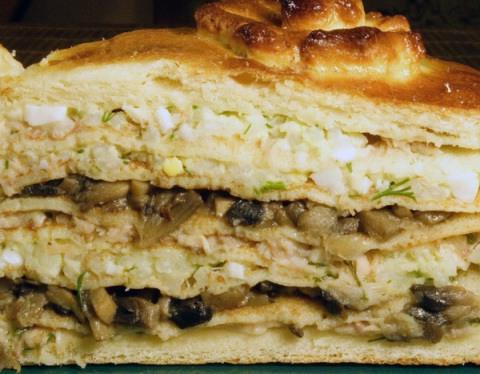
Historical changes
After the adoption of Orthodoxy, Russian folk dishes became even more diverse. This is not surprising. If more than half the days of the year is prohibited from eating meat, milk, eggs, fish and vegetable oil, you must show ingenuity.
After long posts Russians gladly indulged in fast feasts, the welfare of cattle was bred a lot, and hunting grounds were infested with livestock - hares, pheasants, partridges, ducks, wood grouses, hazel grouses, black grouses. They hunted bears, deer, moose, boars. The accession of the land was much updated by the Russians and considerably expanded our menu. Many new things in the diet of compatriots brought in the king-reformer - Peter 1. He started the tradition of making butter from cream and sour cream, as is customary in Holland. He owns the introduction of new crops in crop rotation and the ban on the cultivation of the shin, which is now known as amaranth. 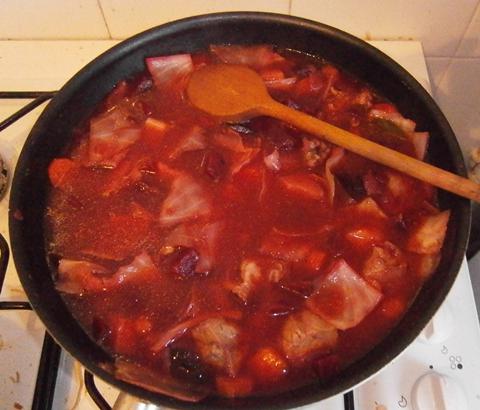 Repeatedly updated the way of life in Russia, and changed the traditional Russian folk dishes. The history of the country with a circle of worldly traditions is beautifully described in essays on the Russian antiquity by Mikhail Ivanovich Pylyaev, Nikolai Ivanovich Kostomarov, Ariadna Vladimirovna Tyrkova-Williams.
Repeatedly updated the way of life in Russia, and changed the traditional Russian folk dishes. The history of the country with a circle of worldly traditions is beautifully described in essays on the Russian antiquity by Mikhail Ivanovich Pylyaev, Nikolai Ivanovich Kostomarov, Ariadna Vladimirovna Tyrkova-Williams.
Famous Russian cuisine
Traditions have changed, but some preferences have passed the test of time. All over the world, Russian national dishes such as cabbage soup, pancakes, borsch, porridge, poultry, pie, jelly, okroshka, kvass, sbiten, mead, etc. are well known. Fish, mushrooms, cereals are what they were most often cooked from . 
Smoking our ancestors did not know. It came to Russia in the early twentieth century. Meat and fish cooked, baked, stewed, salted, sour, dried or ate raw, in the form of stroganina. Sturgeon, sterlet, and beluga were by no means the rations of the rich alone. Delicious ear, pouring or pies from noble fish ate and ordinary people. Pancakes with black caviar, pies with rabbit, stellate sturgeon, porridges with foam from melted cream are all traditional Russian folk dishes. The list is far from final. Too few chronicles have survived to this day. More or less complete evidence is from the 9th century.
Shchi and Russian stove
Shchi - a universal dish, which is well known to visitors to Russian restaurants abroad. Correct utterance of this word even became a kind of entertainment. In German, for example, to designate the letter combination "soup" is used already 8 letters. Of these, 7 are consonants. Try several times to skilfully pronounce a combination of seven consonants and one vowel at the end. 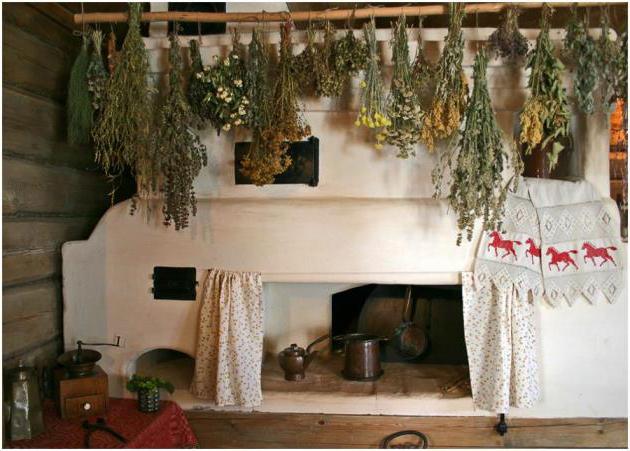
Shchi can be cooked on vegetable, mushroom, meat, fish broth. Sour cabbage soup is boiled from sauerkraut or on brine from other vegetables. Russian cuisine was not cooked in a stepwise heat treatment. If cooked soup, borsch, porridge, etc., then no products for them are not fried separately, as is customary now. Either cooked or baked. We cooked in a large stone oven. The dish did not come in contact with open fire. It seemed to languish at a constant or slowly decreasing temperature from all directions, and not just from below. This gave the food a special taste, texture and consistency. They did not bring food to a boil. More significant indicators were different - to breads, that is very high heat, after breads - that is, at a lower temperature and free spirit. I was preparing food for a long time. Any cabbage soup or porridge, which had been stewed in a hot oven for several hours, acquired an absolutely amazing taste, and useful material at such processing were saved much more completely. 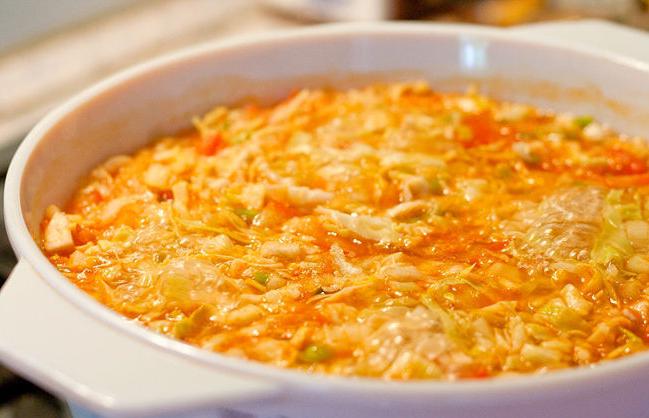
On an electric or gas stove, it is impossible to reproduce the taste, which was distinguished by Russian folk dishes. Their names are in the old culinary books - they are kalya, tyuria, zatirha, nanny, kurik, kulaga, maloduha, loga, zhiruha, zavaruha, dump, gamula, vole, colt, oatmeal, etc.
Oatmeal
Oatmeal - a specially prepared meal made from oats or barley, which can be used in a variety of dishes. The grain, peeled from the hard husks, is steamed, dried, calcined and crushed into flour. Flour from the fiber is poured with hot milk, water, broth, broth from berries, vegetables or fruits. It does not form gluten, but it swells and thickens very well. You do not need to boil or boil the oatmeal. This flour contains a large amount of lecithin, which at high temperatures is destroyed. Oats and cabbage soup sometimes thickened with oatmeal. Milk porridge on fat was part of the diet of the soldiers' menu. Tolokno was mixed with berries and placed for several hours in an oven. Berries were given juice, soaked in flour and roasted. It turned out delicious treat, which was eaten with honey. 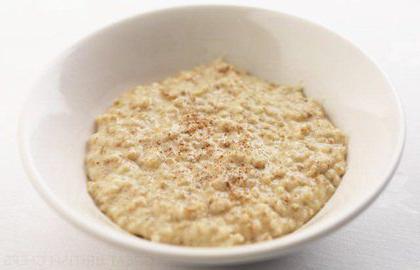
Kalla
Speaking modern language, kalya - fish soup, or rather, solyanka. However, the old pottery was made on brine from sauerkraut or cucumbers. It was allowed to add kvass to the brine. Fish was taken from sturgeon breeds, with caviar. Often prepared for one black caviar. Kalla was very rich in broth with a spicy taste. At other times it was made from ducks, black grouses or quails. Cooked in the oven for several hours, it turned out to be incredibly fragrant, and the game bones were cooked to a soft state. Spicy herbs such as dill, caraway, horse-radish, mustard, etc. were grown in the gardens. Our ancestors skillfully used fragrant herbs, but over time many secrets vanished, as the place of domestic herbs was taken by spices brought from East Asia. 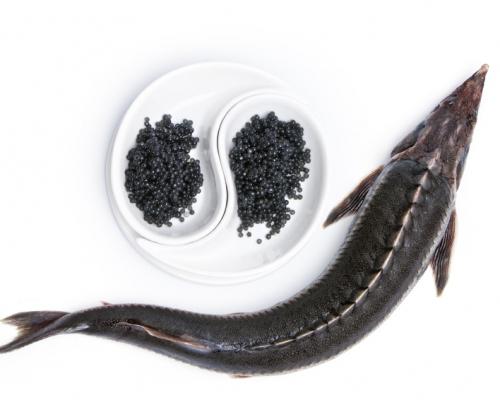
Currently, the calyx can be prepared from catfish or halibut and cod caviar. Brine is suitable for casks, cabbage, olives, watermelons or other fruits. It is important that it does not contain vinegar and preservatives.
Kournik
This is an old festive Russian folk dish. The recipe means yeast or unleavened dough. Previously, small pies were made, which were stuffed with porridge, mushrooms, fish, vegetables and combined into one big pie. In it it was very well baked, turned out juicy and magnificent. Without a kurik, not a single wedding. It was used to predict the future. Depending on who received the filling, they made interpretations. 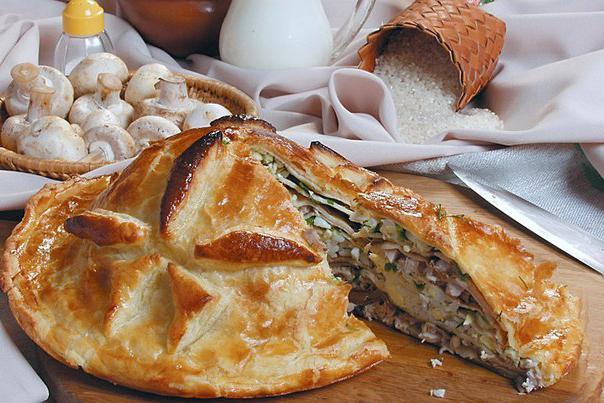
Okroshka
Okroshka was cooked, mainly in summer. This is a cold dish, similar to soup. It is based on kvass and finely chopped fresh vegetables. Modern okroshka do not only on kvass, but also on kefir. In addition to cucumbers, green onions, radishes, eggs, it puts cooked meat, season with sour cream and flavor a large amount of lettuce - dill, parsley, etc. 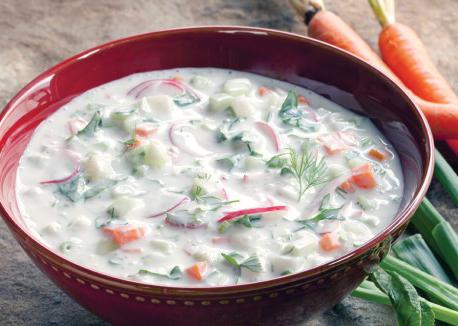
Honey
There has always been a lot of honey in our country. He's in a large number supplied for export. Before the appearance of sugar, the food was sweetened only with honey. With him brewed berries for the winter, made drinks. Heat treatment of honey was not subjected, because they knew about the great benefits of this product for health. Drinks made of it were warm or cold.
In the samovar they boiled water and insisted on herbs. Such broths were used everywhere. chamomile, ivan tea, guelder rose, raspberry, strawberry and other plants were collected and dried in the summer. Brews on honey according to old recipes again began to become fashionable. 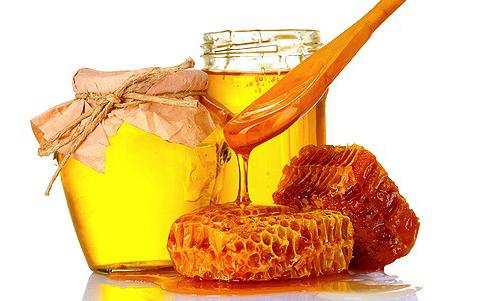
Chocolates and jellies
Foreigners noted that in Russia cold dishes are very good - jellies and chillers. They were cooked from sturgeon fish. In winter, the meat-eater was made from dairy pigs and poultry. Beef was not used for food, as the bulls were plowed with earth, and the cows were given milk. Pork, too, is not very much appreciated. Chickens and ducks carried eggs. The main supplier of meat was the forest. The game was the main meat in the periods outside the posts. Seasoned chilli and jellied with horseradish, mustard, vinegar and salt sauces. 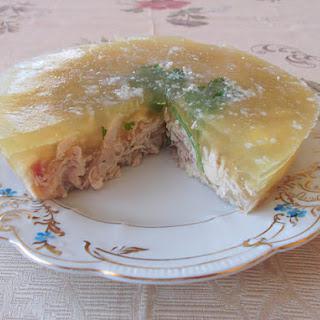
A fish
From the White Sea in the winter on a sleigh in central Russia drove the sturgeon. The caviar of this fish was not a delicacy. And the poor, and wealthy people ate it in large numbers. In large barrels she was taken abroad. Fresh eggs were eaten with vinegar and salt.
Smelt to a crispy state baked in the oven and on the same dish was served to the table. She baked so that the bones and fins became very soft and invisible.
From sturgeon we made stuffings for pies. Vyaziga was removed, cleaned and dried. As necessary, it was soaked, cut and mixed with porridge, made pies. Rybniki, or fish pies, were made from raw fish. 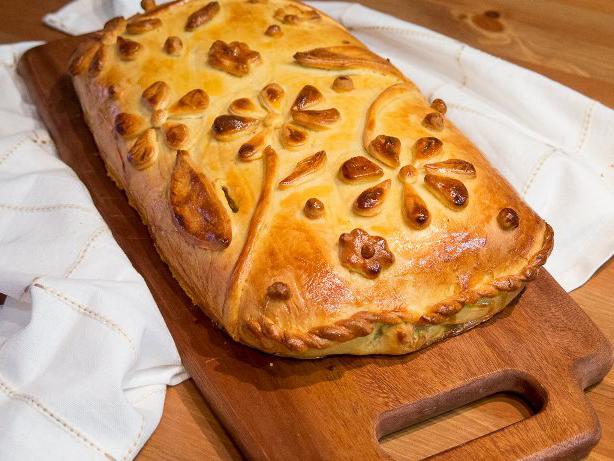
Ear from sterlet, stellate sturgeon, sturgeon or beluga made on a complex broth. At first they cooked a small river fish, which they did not clean, and after boiling they were thrown away. This broth, or Yushka, served as the basis for the royal ears.
Russian folk dishes were not prepared from the slaughter, extracted by women. Also not fit for food living creatures that feed on carrion, that is, crayfish.
After Peter's reforms and the appearance of a "window to Europe", wine and sugar were brought to Russia. A trade route from China and India to Europe was laid through the country. So we had tea, coffee, spices, etc.
Along with them came new traditions, but Russian folk dishes, photos of which are presented in the article, are still loved and in demand. If you cook them in the oven or multivark, they will be a bit like authentic options.
Russian International Academy of Tourism
Kazan Branch
Course work in discipline
Technology of cooking
on the topic: "Old Russian Cuisine"
Performed:
2nd year student
group MG-182
Gilmutdinova Alina
Checked:
Artyukhina TS
Kazan 2010
Introduction
Chapter 1. History and features of Russian cuisine
1.1 History of the development of Old Russian cuisine
1.2 Features of the national Russian cuisine
1.2.1 Ancient Russian cuisine
1.2.2 Modern Russian cuisine
Chapter 2. Practical part of the course. Examples of dishes of Russian cuisine and their preparation
2.1 Routing №1
2.2. Technological Map # 2
2.3 Technical and technological map
Conclusion
Bibliography
1. Anfimova N. A. Cooking: Textbook. for the beginning. prof. Education: Proc. allowance for medium. prof. Education / NA Anfimova, L. L. Tatarskaya. - 2 nd ed., Sr. - M.: Publishing Center "Academy", 2003. - 328 p.
2. All GOSTs
http://vsegost.com/
3. Department of Education of Moscow. "Catering in pre-school educational institutions." Methodical instructions of the city of Moscow. The edition is official. Moscow 2007
4. "Ancient Russian Literature, Anthology, Historical and Literary Site". The author of the project and the compiler is Alexander Petrov (Russia). Studio of the Alexander Petrov Art Foundation (Studio "Alex Petrov Art Fund"). Fund for the adherents of the memory of St. Joseph Volotsky. Copyright (C) 2001-2008 byAlexPetroff (Russia). Allrightreserved.
http://old-rus.narod.ru/13.html
5. Internet library of free e-books.
http://www.e-bibl.narod.ru/referat.html
6. Maslov L. A. Cooking. - GTI, Moscow, 1957.
7. Russian encyclopedia "Tradition".
http://traditio.ru/wiki/Documentation.html. % D0% BD% D1% 8F
8. Collection of recipes for dishes and culinary products for public catering establishments. - Moscow: Economics, 2001. - 718 p.
9. Teplov V. I. Physiology of Nutrition: Textbook. allowance / VI Teplov, VE Boryaev. - Moscow: Dashkov and Co., 2006. - 451 p.
10. Chemical composition and energy value of food: right. McCans and Widdowson / trans. with English. yaz. - SPb .: The profession, 2006. - 415 s
11. http://www.kedem.ru/voyaj/cuisine/20080825-russ-kitchen/
12. © 2002 - 2007 allcafe.info, the certificate on registration of mass media №2-4571.
http://www.allcafe.info/readingroom/kitchen/russian/173/
13. http://health-diet.ru/base_of_food/sostav/1961.php
14. http://maxybaby.net.ua/index.php?loc=art-detskoe-pitanie&art=kalory-table
Http://chealth-diet.ru/base_of_food/sostav/373.php
Http://health-diet.ru/base_of_food/sostav/506.php
Salt cooked food. Technical conditions.
Beet table is fresh, sold in the retail trade network. Technical conditions.
19. Sunflower oil. Specifications .. GOST 15842-90 Canned green peas. Technical conditions. . Onion 51783-2001 Fresh onion, sold in the retail trade network. Technical conditions.
22. GOST R 53127-2008 Canned food. Cucumbers, zucchini, squash with greens in the pour. Technical conditions.
Carrot dining room is fresh, sold in the retail trade network. 23. GOST R 51782-2001. Technical conditions.
24. GOST R 51808-2001 Fresh potatoes, sold in the retail trade network. Technical conditions.
Apps
Annex 1
Caloric value of the dish per 100 g
Example calculation:
Potatoes: in 100 g. 83 kcal, the required amount for cooking 100 g. Of vinaigrette is 27 g., We obtain: 83 * 27/100 = 22.41
Appendix 2
Calculation of proteins
Example calculation:
Potatoes: in 100 g. 2 grams of protein, the necessary amount for cooking 100 g. Of vinaigrette is 27 g., We obtain: 2 * 27/100 = 0.54
Annex 3
Calculation of Fats
Annex 4
Calculation of Carbohydrates
For the centuries-old history of our country, the Russian people invented a huge number recipes. For centuries, Russian cooking was in undeserved neglect: European gourmets considered it barbarous and rude. But, despite the lack of world recognition, Russian cuisine developed, adopted other people's experience, was enriched with new dishes and recipes.
The dominant role on the Russian table has always been played soups. The word "soup" appeared in Russian only at the end of the XVIII century. Before that, liquid dishes were called "bread". Khlebov were divided into cabbage soup, caly, ears, saltwort, borsch and soup; In the summer, cold soups were usually eaten: okroshki and botvinyi on kvass, beetroots, light vegetable soups.
Of greatest popularity, of course, were soup - they numbered up to 60 species: with meat, fish, holistic, with mushrooms, soup lazy, empty, diurnal, green, sour, nettles, etc. Although the rich and the poor use different ingredients to prepare cabbage soup, the basic principle does not change. Mandatory components cabbage soup - cabbage and sour element (sour cream, sorrel, apples, brine). In the soup is added carrots or parsley root, spicy herbs (green onions, celery, dill, garlic, pepper), meat and sometimes mushrooms.
Sour cabbage soup prepared from sauerkraut; gray shchi - from the external green cabbage leaves; green cabbage soup - from sorrel. Ear was originally called broth. Only in the XVII century, this word was fixed its modern meaning - fish soup or soup.
AT ear the minimum of vegetables is used. Classic ear is a strong broth served to fish pies. Each type of fish in the Russian cuisine was prepared separately, not mixing with others to enjoy pure taste. Therefore, the Russian culinary books describe the ear from each fish species separately.
Classical russian okroshka is made from two vegetables. One vegetable necessarily has a neutral taste (boiled potatoes, rutabaga, carrots, fresh cucumbers), and the other has a pronounced taste and smell (parsley, celery, tarragon).
AT okroshka add fish with a neutral taste, beef or chicken. Required items okroshki - boiled eggs and sour cream. As a seasoning, mustard, black pepper or pickles are used.
Another important dish of the Russian national table - porridge. Originally it was a ceremonial, solemn dish, used on feasts and feasts. In the XII century. the word "porridge" was even synonymous with the word "feast." Having lost gradually its ritual meaning, porridge, nevertheless, for many centuries has become the main everyday dish of Russians. Kasha found recognition not only on the people's, but even on the royal table.
Peter I, for example, was so fond of barley porridge that he declared her "favorite Romanov". To "ennoble" the royal darling of barley in the XIX century. renamed the "pearl", i.e. "pearl" (from the word "pearl"). A laudable continuity of generations and closeness to the people was demonstrated by Nicholas II: at a solemn dinner in honor of his coronation in 1883, the guests were given a barley porridge.
One of the most ancient Russian dishes - pancakes. Nobody knows when pancakes appeared on the Russian table, but it is known that they were a ritual dish still in the pagan Slavic peoples. The most varied beliefs and traditions are associated with Russian people with pancakes: pancakes were a mandatory dish at a funeral feast, they also fed a woman in childbirth during childbirth. One of the traditions that have survived to this day, associated with pancakes - Shrove Tuesday is an ancient pagan holiday. For a whole week before Lent, Russian pancakes are baked in all Russian houses and they are eaten with various snacks - caviar, sour cream, fish, meat, mushrooms.
Another famous Russian flour dish - black bread. He is unpopular in other countries, but in Russia, he can not do without a single dinner. Black rye bread appeared in Russia in the IX century. and immediately became the most favorite dish. He was ate in rich noble houses, and in peasant huts. White wheat bread was baked much later, but widespread it was only in the early XX century.
White bread was perceived as a festive meal. Therefore he baked it not in bakeries, as black, but in special bakeries, where it was slightly sweetened.
Another floury delicacy, known in Russia even before the adoption of Christianity and survived (albeit in a modified form) to this day, - gingerbread. At first gingerbread consisted of a mixture of rye flour with honey and berry juice - they were even called "honey bread". These were the simplest and, probably, the most delicious cakes, as honey accounted for almost 50% of them. However, gradually in gingerbread they began to add more spices: cinnamon, cloves, cardamom, lemon zestNutmeg, baden, mint, anise, ginger, etc. Spices have become a distinctive feature of gingerbread. Due to a change in the recipe, the baking changed its name.
Of course, speaking of Russian flour dishes, we can not help mentioning pies - the most famous and favorite dish of Russian cuisine. This is one of the genuine national products, which came to us from ancient times, avoiding any foreign influences. Pies from ancient times to this day are baked on holidays, not without reason the same word "pie" came from the word "feast." At the same time, each festival was accompanied by a special kind of pies, which caused a variety of forms, fillings and types of pies. What pies did not bake in Russia: with meat, fish, herring, milk, eggs, cottage cheese, mushrooms, porridge, turnips, onions, cabbage. Pies became a dessert if berries and fruits were used as fillings. Pies and patties still remain one of the favorite Russian dishes, which you can taste both in an expensive restaurant and visiting friends. Since the XVI century. we can talk about the differences in the cuisine of the monastery, rural and royal.
In the monastery - the main role was played by vegetables, herbs, greens and fruits. They were the basis of the monks' food, especially during fasting. Rural cuisine was less rich and diverse, but also in its own way exquisite: at a festive dinner it was supposed to serve not less than 15 dishes. Lunch in general is the main meal in Russia. In the old days, in more or less affluent houses, in turn, four dishes were served: a cold snack, soup, the second, and pies or patties. But at the feasts of the boyars began to appear a huge number of dishes, reaching 50. At the same table served 150-200.
Lunches lasted 6-8 hours in a row and included almost a dozen changes, each of which in turn consists of two dozen dishes of the same name: a dozen varieties of fried game, salted fish, a dozen varieties of pancakes and pies. Dishes were prepared from a whole animal or plant, all sorts of grinding, grinding and crushing food were used only in pie fillings. And even very modest.
Fish for pies, for example, were not crushed, but were produced. At the feasts it was customary to drink honey before the feast, as an appetizing appetite, and after it, at the conclusion of the feasts.
Food is the same washed down with kvass and beer. This happened until the XV century. In the 15th century, "bread wine" appeared in Russia, vodka. However, despite the difference in the number of dishes among the rich and poor, the nature of the food retained national traits. The nature of the preparation of dishes of Russian cuisine is largely due to the peculiarities of the Russian stove, which for centuries served faithfully to the common people of the city, noble boyars, and peasants from the townspeople.
The design of the Russian oven conditioned the way of cooking. Since the dishes were heated not from the bottom, but from the sides, its lateral surfaces should have a maximum area for heating the entire contents. Hence the round shape of the pots and cast-iron pots and the abundance in the Old Russian cuisine of stewed, boiled, chopped and baked dishes. The furnaces were large, they could cook several dishes at the same time. Despite the fact that the food at times slightly gave off smoke, the Russian stove had advantages: the dishes cooked in it had a unique taste.
When Peter I in the kitchens of Russians began to appear plates and utensils, adapted for roasting and cooking on open fire: pots, baking sheets, noise. The cooking in a Russian stove, giving the Russian cuisine its distinctiveness, at the same time limited the variety of heat treatment of dishes. It was not allowed to mix products, grind them, crush them (especially it belonged to a meat table - even in pies, fish and meat did not crush, but were stratified). Moreover, the ecclesiastical tradition prevailed over Russian cuisine: for each day, according to its significance in the church calendar, a table was pre-appointed. Even rich people led this kind of gastronomic calendar, which, of course, did not contribute to the development of the culinary imagination of their cooks.
By the end of the 17th century, jelly (from the word "student", that is, cold: first, the jelly must be cold, otherwise it will spread out on the plate, and secondly, eat it usually in winter, from Christmas to Epiphany, that is, in the coldest season). Of the most popular beverages were berry and fruit juices with fruit drinks, and also tinctures.
Mead - a drink based on bee honey - it was stronger, and then vodka appeared. But the main Russian drink since ancient times remained bread kvass. With what only it did not do - from raisins to mint! French chefs brought up a whole galaxy of brilliant Russian chefs who made their significant contribution to the development of Russian and world cuisine.
Dishes invented by them, received completely Russian names. For example, "Fire pies", a tribute even gave Pushkin. The author of these famous chicken cutlets, crashed in crackers, - the wife of the owner of the tavern in Torzhok - Daria Pozharsky. It is said that Alexander I suddenly stopped in Torzhok because of a crew breakdown. It was decided to dine at the most respectable Pozharsky tavern, where cutlets from veal were on the menu. They were ordered to the royal table. But the tavern was not veal, so Daria cooked cutlets from chickens. These cutlets really liked the king and soon became a popular Russian dish.
Another famous Russian cutlets - Kiev - have a pretty amusing story. For the first time these cutlets, consisting of whole chicken breasts with melted butter inside, were filed in the early XX century. in the restaurant of the Merchant Club on Nevsky Prospekt. Then these cutlets were called "new Mikhailovsky" in honor of the Mikhailovsky Palace, located nearby. Time ruthlessly treated both the Merchants Club and his restaurant, but spared the dish invented by the chefs. For a long time it remained in oblivion, but in 1947 cutlets were served to a narrow circle of Ukrainian diplomats at a dinner on the occasion of the return of their delegation from Paris, where they signed a peace treaty with Germany. It was then that the cutlets received a new baptism and a new life.
Unfortunately, not all Russian dishes had a happy fate. Many of the primordially Russian dishes today, alas, have lost their significance for the Russian people, many recipes have not been preserved at all. So, for example, the former variety of fish dishes is now reduced almost to a minimum: classic fish dishes like " theOf course, this is due not only to the loss of tradition, but also to the considerable impoverishment of Russia's fishery wealth, and many vegetables have also disappeared, giving way to imported ones, adopted on the Russian soil.Since the appearance of potatoes, turnip, which is rightfully considered the progenitor of vegetable crops cultivated in Russia. This vegetable is perfectly preserved, so it was eaten all year round in different forms.
A village delicacy was considered to be dried turnips, which resembled dried fruit to taste. By the way, unlike their descendants, Russian people used not only root vegetables themselves, but also the tops, making salads and stuffing for their favorite soups (especially tasty was considered beet tops). Serious damage to the Russian culinary tradition was caused by the lack of records.
The first semblance of the cookbook was compiled in 1547. However, instead of detailed recipes, only a list of Russian dishes was compiled - without any explanation of what should be cooked. The consequences of this frivolity were deplorable: the names of the dishes turned out to be such that today scientists - connoisseurs of the Russian language - can not decipher the fourth part of these records. How, for example, is the dish prepared under the mysterious name "Shchipana Podparnaya"? Probably, the recipe for this dish will remain an eternal mystery. Not more foresight was shown by Russian culinary specialists at a later time.
The first cookbooks in Russia appeared in the 18th century. - on the wave of fascination with French cuisine. Recipes of Russian dishes in these cookbooks were inserted only as an addition, since Russian food was considered plebeian. In addition, the compilers were sure that it is simply not necessary to record Russian recipes, since "any woman knows how to cook". This was the greatest error. When in the beginning of the XIX century. cooks began to restore the Russian culinary tradition, it turned out that the recipes of many dishes have already been lost and no one can find them out.
The first book of Russian recipes "Russian Povarnya" was compiled by the Tula landowner in 1816. The author of the book had to compose many descriptions from memory, because of what "Russian Povarnya" did not reflect the entire wealth of dishes of the Russian national table.



